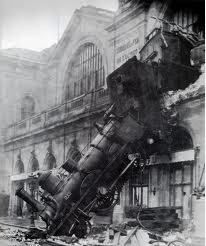Sport and Exercise Medicine: The UK trainee perspective (A monthly series on the BJSM blog)
By Dr Ciaran Cosgrave
 To gain more experience at providing medical cover at mass-participation endurance events I volunteered my services at a local marathon. It was the first time that the city had hosted a marathon in over a decade so there was a lot of excitement surrounding the event. A local volunteer organisation had been afforded the responsibility of providing medical cover for the marathon. However their task was made difficult by the fact that some vital information was only provided at the last minute (route, participant numbers etc.). Three days before the race was due to be run the organisation providing medical cover were seriously considering pulling out of the event because of poor communication from the event organisers and a safety concern for the runners.
To gain more experience at providing medical cover at mass-participation endurance events I volunteered my services at a local marathon. It was the first time that the city had hosted a marathon in over a decade so there was a lot of excitement surrounding the event. A local volunteer organisation had been afforded the responsibility of providing medical cover for the marathon. However their task was made difficult by the fact that some vital information was only provided at the last minute (route, participant numbers etc.). Three days before the race was due to be run the organisation providing medical cover were seriously considering pulling out of the event because of poor communication from the event organisers and a safety concern for the runners.
Despite this, the marathon went ahead as planned. When I arrived on the morning of the event it quickly became clear that we were seriously under prepared to deal with many of the potential illnesses and conditions encountered in such a race. There were approximately 10,000 entrants and only 3 doctors (a second year doctor, an orthopaedic surgeon and myself). Neither of my colleagues had any experience of working at endurance events. We had ample first aid staff, ambulances and paramedics, however we were lacking some essential equipment; we had dozens of intravenous fluid giving-sets but no fluids or cannulae. I was laughed at when I enquired about the rectal thermometers (luckily I’d brought my own), and when I asked where the ice was they thought I wanted it for my drink. At the finish line there was only an 8-bed ‘field hospital’.
At this point I seriously considered going home. What had I let myself in for? It was ironic that I had actually volunteered for this role. I had genuine concerns for the safety of the runners and doubted that we would be able to cope with the demand of expected injuries and illness.
Luckily we had a couple of hours before the race commenced. We borrowed whatever additional equipment we needed from the local hospital and erected an additional 20-bed marquee at the finish line. This was allocated for ‘minors’, leaving the 8-bed unit for ‘majors’. I gave a brief teaching session to all available volunteers about the types of conditions that may be encountered and how these should be managed. Finally, we put a system in place whereby all runners needing medical attention would be triaged at the first point of contact to either ‘majors’ or ‘minors’. Anyone sent to ‘majors’ would have a set of observations done on arrival, with any ‘red-flags’ being brought to the attention of a doctor.
Thankfully we made it through the race without any fatalities. Both the 8-bed and 20-bed units were full for 3-6 hours after the start of the race. We encountered severe hyperthermia, hypoglycaemia, hypothermia and acute asthma, as well as the usual cramps, injuries and exhaustion.
In hind-sight I think we did an excellent job on the day. Everyone in the team worked extremely hard all day and I do believe a serious incident was avoided as a result. It was also a learning experience for myself; I will never again presume an organisation is prepared to deal with the job they have signed up to, and I will always endeavour to make contact with the CMO of any such event in advance to establish that everything that needs to be in place is in place.
Related Blogs
*********************************************
Dr Ciaran Cosgrave is a Specialist Registrar in Sport and Exercise Medicine.
Dr James Thing co-ordinates “Sport and Exercise Medicine: The UK trainee perspective” monthly blog series